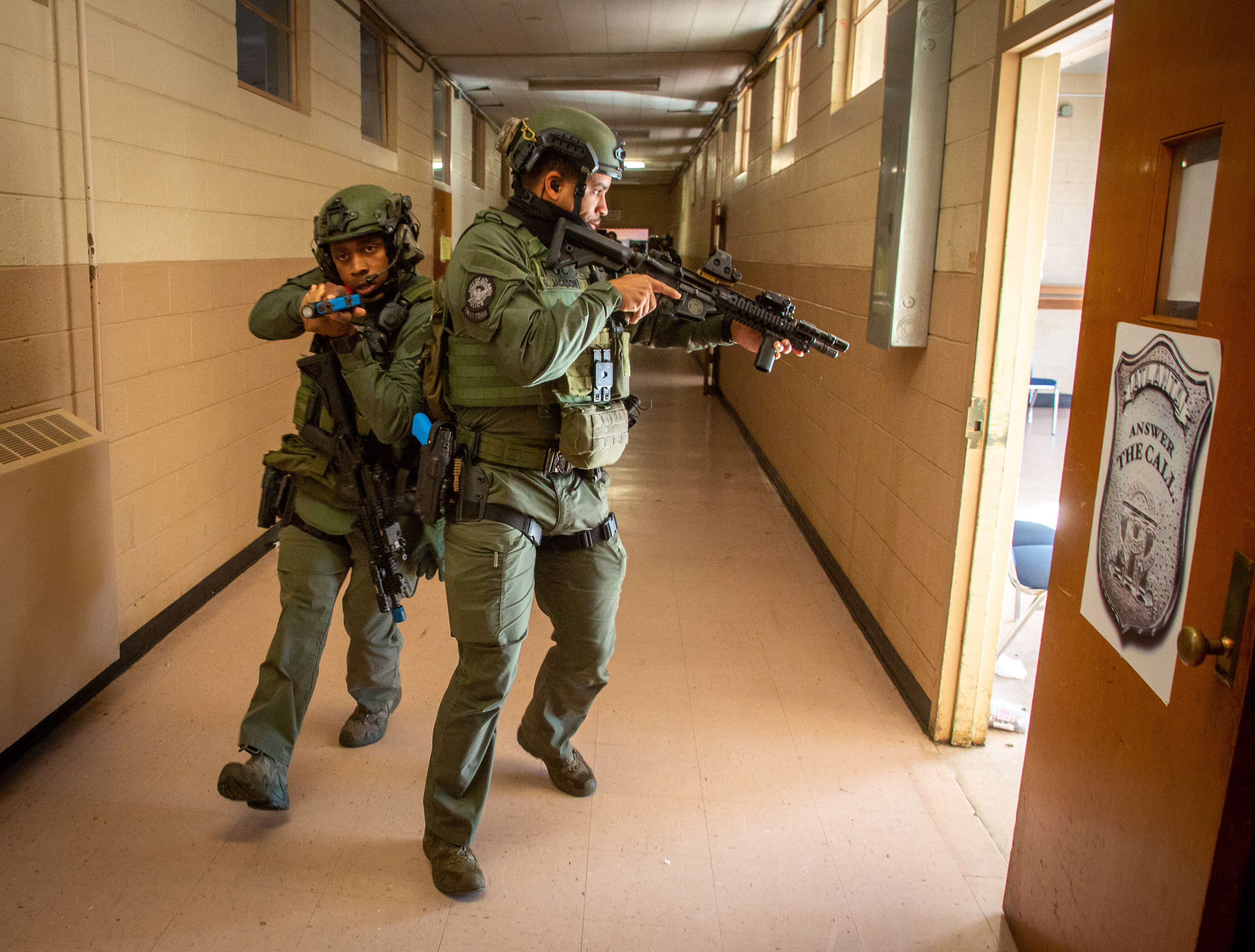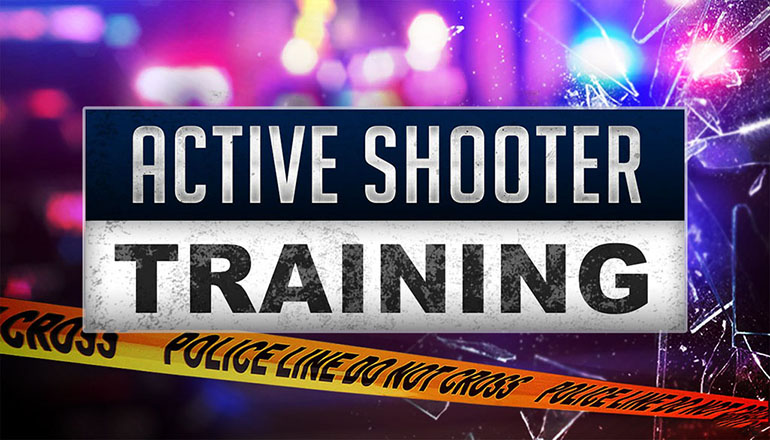Why Active Shooter Training Is Crucial for Workplace Security
Why Active Shooter Training Is Crucial for Workplace Security
Blog Article
The Necessary Duty of Active Shooter Training in Enhancing Emergency Situation Feedback Approaches in Numerous Environments
Active shooter training has actually emerged as an essential element in refining emergency feedback approaches across varied setups, from educational organizations to corporate environments. By equipping people with customized understanding and skills, these programs not only prepare participants for prospective dilemmas but additionally promote a society of awareness and cooperation. The effectiveness of such training hinges on different aspects, consisting of the details context in which it is applied and the ongoing dedication to enhancement. Checking out these dimensions exposes crucial insights that could significantly affect readiness and action results despite alarming dangers.
Relevance of Energetic Shooter Training
In a period marked by enhancing problems over public safety and security, the importance of active shooter training can not be overstated. As cases of weapon physical violence in public areas proceed to rise, organizations across different sectorsâEUR" schools, workplaces, and public venuesâEUR" are acknowledging the requirement of preparing their personnel and communities for such emergencies. Energetic shooter training gears up individuals with critical abilities and knowledge to react effectively in serious scenarios, potentially decreasing casualties and saving lives.
The training not just concentrates on instant feedback actions, such as emptying and safeguarding in location, however additionally cultivates a culture of recognition and readiness. By participating in realistic simulations and conversations, participants can determine possible vulnerabilities within their atmosphere and create approaches for mitigating threats. Such training boosts communication and sychronisation among group members and initial responders, ensuring an extra unified technique during crises.

Trick Elements of Effective Training
Reliable active shooter training consists of numerous crucial parts that boost readiness and response capabilities. Primarily, realistic scenario-based simulations are crucial. These workouts immerse participants in high-stress scenarios that simulate possible active shooter occasions, permitting them to practice decision-making and physical responses under stress.
Furthermore, training has to consist of an extensive understanding of communication protocols. Individuals need to be skilled in how to pass on vital information to regulation enforcement and fellow people throughout an event. This consists of utilizing emergency signals and comprehending the pecking order.
One more vital part is the incorporation of mental health awareness. Training ought to resolve the emotional effect of energetic shooter situations, furnishing individuals with dealing strategies and resources to support their mental wellness post-incident.
In addition, regular refresher course training courses are crucial to make certain that abilities remain sharp and expertise is up-to-date. This continuous education and learning enhances the significance of preparedness and cultivates a culture of security within companies.
Training for Different Settings
Active shooter training must be tailored to the specific settings in which individuals run, as each setting presents one-of-a-kind obstacles and characteristics. Training in a corporate workplace will certainly vary significantly from that in YOURURL.com a college, purchasing mall, or medical care center. Each environment requires a tailored approach that takes into consideration aspects such as design, populace density, and readily available retreat routes.
In universities, training programs must emphasize lockdown procedures, interaction methods with law enforcement, and methods for shielding pupils. On the other hand, in company setups, training may concentrate on evacuation strategies, acknowledging suspicious habits, and making use of available resources for protection or shelter-in-place situations.
Furthermore, public venues like malls or sporting events require comprehensive crowd administration techniques, with a focus on rapid feedback control amongst security personnel and local police.
In medical care atmospheres, training needs to attend to particular vulnerabilities, such as the presence of clients that may call for immediate assistance. By comprehending the distinctive attributes of each setting, companies can establish efficient training components that enhance readiness and enhance general security, guaranteeing that people are outfitted to react suitably in varied dilemma circumstances.

Building a Culture of Recognition
Developing a society of awareness is fundamental to boosting precaution in any setting, as it equips people to identify possible dangers and react proactively. This culture demands continuous education, open interaction, and the assimilation of safety procedures into everyday regimens.
Organizations must prioritize active shooter training as part of their overarching safety method, ensuring that all personnel recognize the details risks connected with their setting. Normal training sessions cultivate vigilance and knowledge with emergency situation procedures, motivating individuals to continue to be alert to uncommon behaviors or circumstances.
In addition, cultivating a society of understanding involves developing a setting where reporting you could try these out questionable activity is both urged and normalized. active shooter training. Employees need to feel comfortable sharing their worries without fear of vengeance. This can be accomplished with clear networks of communication and helpful management
Additionally, participating in area collaborations can heighten awareness beyond organizational boundaries, advertising a shared responsibility for security. Initiatives such as workshops, drills, and educational sessions can even more improve collective caution. Ultimately, developing a society of understanding not just prepares individuals for potential crises but also reinforces the general durability of the company against hazards.
Examining Training Performance
While regular training sessions are critical for readiness, reviewing their performance is just as vital to ensure that personnel are geared up with the essential skills and understanding to respond appropriately in the occasion of an active shooter scenario. Assessment procedures should include both qualitative and quantitative evaluations to measure the influence of training on response capabilities.
Surveys and feedback from participants can offer beneficial insights right into the training's relevance and applicability. Additionally, carrying out practical drills and simulations permits companies to observe real-time decision-making and team effort under pressure. Evaluating the end results of these workouts assists identify toughness and areas for improvement.

Involving stakeholders, including police and emergency situation -responders, in the evaluation process can improve integrity and offer a comprehensive viewpoint visit the site on training effectiveness (active shooter training). Ultimately, an organized examination technique guarantees that active shooter training continues to be a crucial element of an organization's emergency situation reaction approach, fostering a much safer setting for all
Conclusion
Energetic shooter training is important in fortifying emergency feedback approaches across varied environments. Inevitably, the execution and evaluation of efficient training programs add substantially to minimizing the influence of active shooter scenarios, thus securing lives and enhancing neighborhood durability.
Report this page